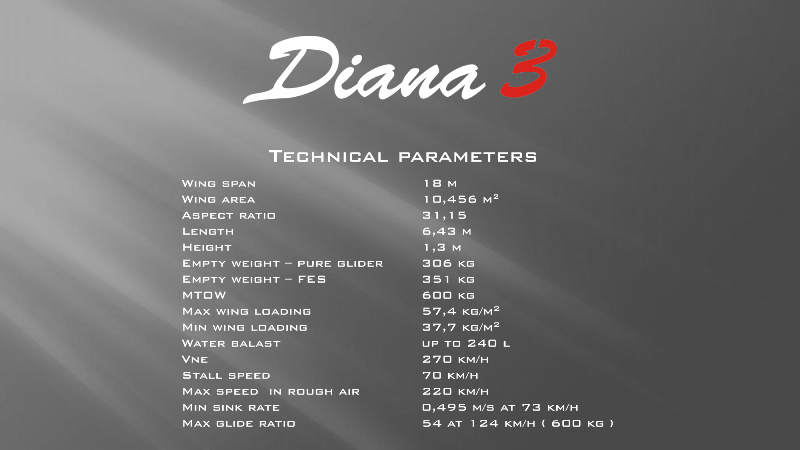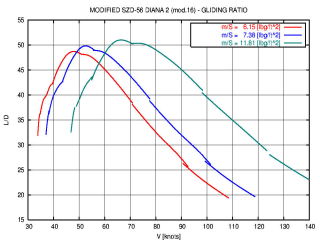
|
|
 |

| Introducing
Diana 3
|
||||||||||||||||||||||||||||||||||||||||||||||||||
|
Diana 2 Experience gained over a design, construction and operation of the SZD-56-1 sailplane model pays now. Pilots flying the hitherto built DIANA ships, over the recent years have broken numerous records. To the verified already, still unconventional design features I am adding now a sensational, bright new aerodynamic design of a wing, by Krzysztof Kubrynski. Combination of these two features forms a unique to a world scale sailplane for the 15-meter Racing Class: Diana-2. This one will be distinguished by: � the aerodynamic design, based on the original authors methodology in sailplane aerodynamics - for the first time employed on this project � the unconventional, straying from commonly used design solutions - this become a distinguishing feature of DIANA gliders � the unattainable till now scale of available wing surface modification - transmitting directly onto the range of available weather condition The available surface loading could be increased twofold from 28 to 58 kg/m2 (5,73 -11,85 lb/ft2 ), while the ballast in wings surpasses the glider empty weight by 60 kg (132,28 lb) - not to be found in any other design. This is really a sailplane for all weather conditions. Bogumił BereśTechnical data Dimensions
Performance
Manufacturer:
Avionic, G�rki Wielkie, POLAND 8051
N. Wisner
Technical Description
With today's aerodynamics, computers and
software, it was possible to make the sailplane really modern.
Estimated possible reduction of profile drag of the actually used
Diana's airfoil can achieve about 20%. Taking into consideration the
possible effect from lowering the adverse aerodynamic interference,
the reduction of parasite drag by making wing slightly bigger and
installing winglets to reduce induced drag, the increase of max. L/D
about 10% and farther reduction sink rate at higher speeds can be
expected. Aerodynamic design of the new wing was performed by
Krzysztof Kubrynski (Warsaw University of Technology). The new wing
planform is totally curved. This solution lets reduce both induced
drag and wing profile drag, and allows to expect proper wing stall
progression. Wing profiles are changing along the span and meet
aerodynamic requirements in all sections in the best manner.
Diana-2's airfoil sections are even thinner then before, ranging
from 12.8% at the root to 12.2% at the tip (and much less at the
winglets). Additionally they are modified at the wing/fuselage
junction. The flaperon chord is 17% and they can be deflected -2 to
+28 deg. Aerodynamic philosophy of new Diana's airfoils is slightly
different then that of other sailplanes and aerodynamic
characteristics are expected to be slightly more profitable,
especially at lower speeds. At the same time, even the profiles are
thinner than original Diana's airfoil, the stiffness and strength
characteristics are much better, and a cross section area is higher.
This is important for wing weight and volume of water ballast.
Pneumatic turbulators are used to enforce turbulent transition on
the lower flap surface.
|
||||||||||||||||||||||||||||||||||||||||||||||||||
|
|
|
|||||||||||||||||||||||||||||||||||||||||||||||||




